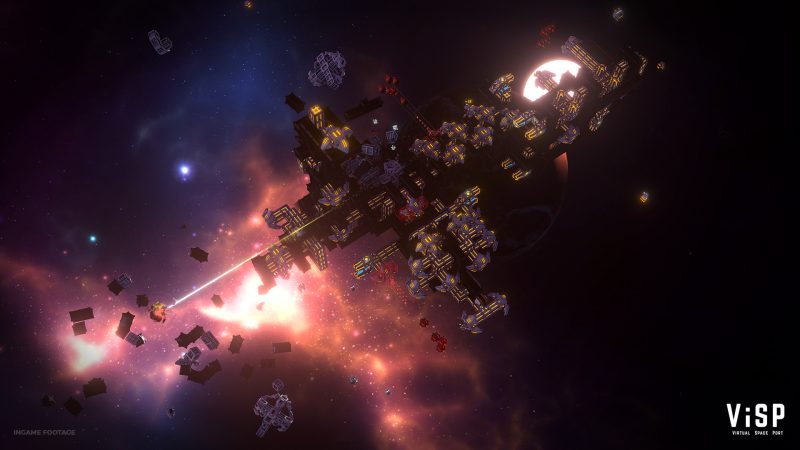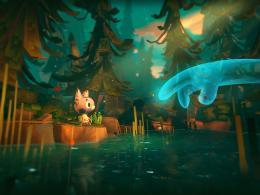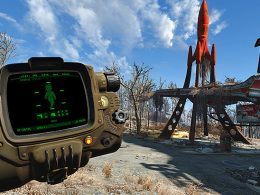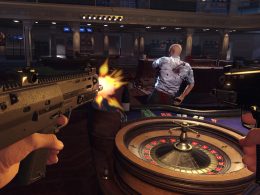If the Steam catalogue were outer space, the many numerous VR mini-games for under 30 francs would probably soon blow up the space junk belt: Because there really has been a lot of VR junk since the first generation. But take a simple game principle and intuitive roomscaling controls. According to such a recipe, even after several collapse phases of game creation, a new star can be born in the firmament of virtual reality, as the puzzle game "ViSP - Virtual Space Port symbolised. "ViSP" was forged by exactly two developers, namely two game design students from HTW Berlin, and half of it is Swiss craftsmanship. By the way, you can find out how this came about in this five-minute video (below) on the development history. Fun Fact: You can even switch the menu to Schwyzerdüütsch if you are a little tired of the language of our northern neighbour.
Build and defend is the motto. The task is to build huge spaceships, which become more complex from stage to stage depending on the level of difficulty. Building ships is done with simple building blocks. But you have to be clever and nimble to fend off enemy laser ships. Fortunately, there is a second type of black block that keeps you away from the invasive beams. Unfortunately, your vital resources, i.e. your blocks, are in danger of running out at any time. But luckily you have two hands and two eyes, or "only" - because movement and skill are needed here.
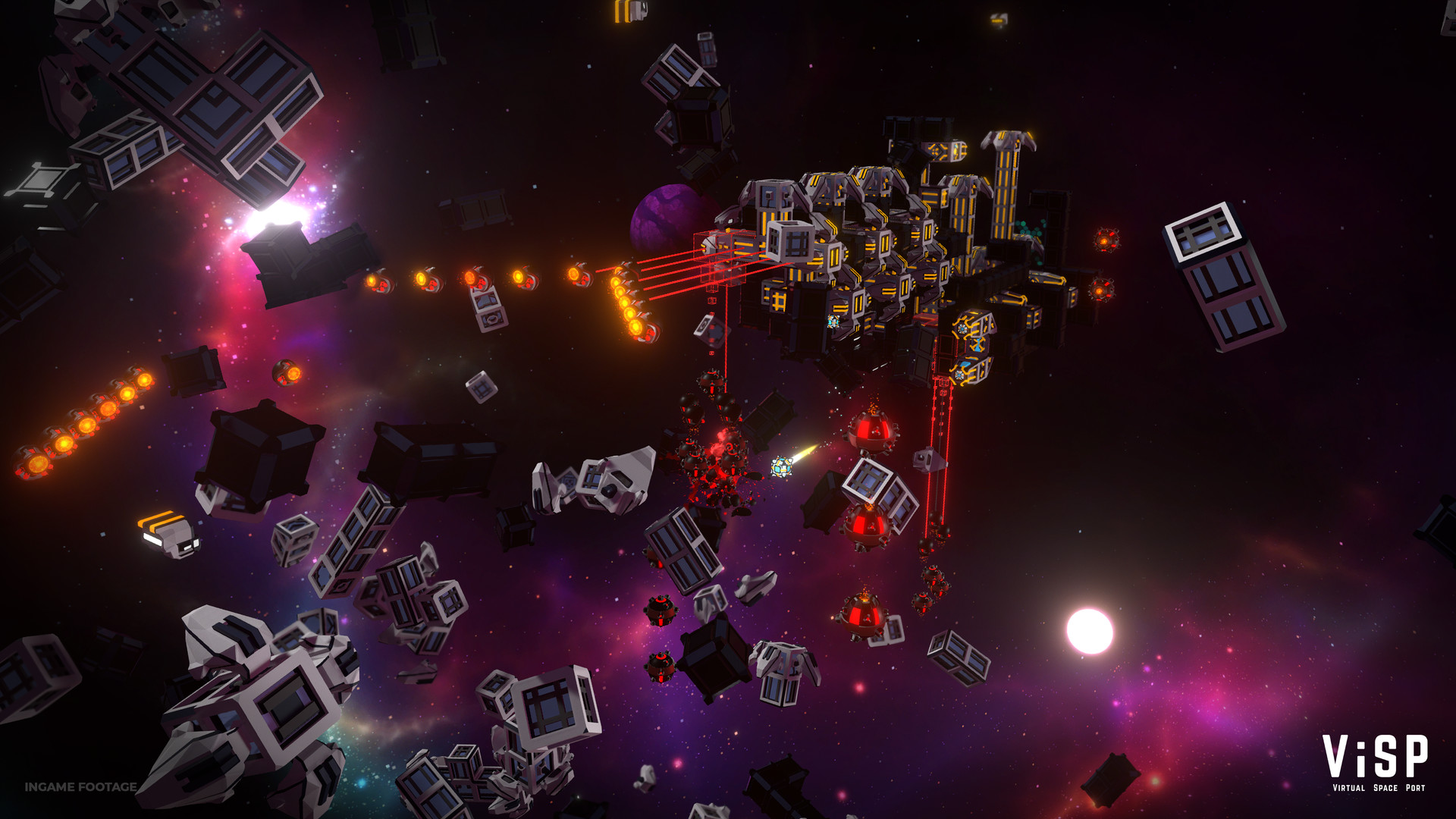
Simple and ingenious control
What we really like when we first dive into "ViSP Virtual Space Port" is the tile-like menu structure. You reach for the nets of the conical option fields in the desired direction to fold out further sub-options. The first time you play, you should ideally start the tutorial, which takes about five minutes. It explains to you how the basic mechanics work. It is simple. You pull with the controller in the respective direction to line up blocks to reach the main bases. But they are always far away from each other and you need more blocks. Always.
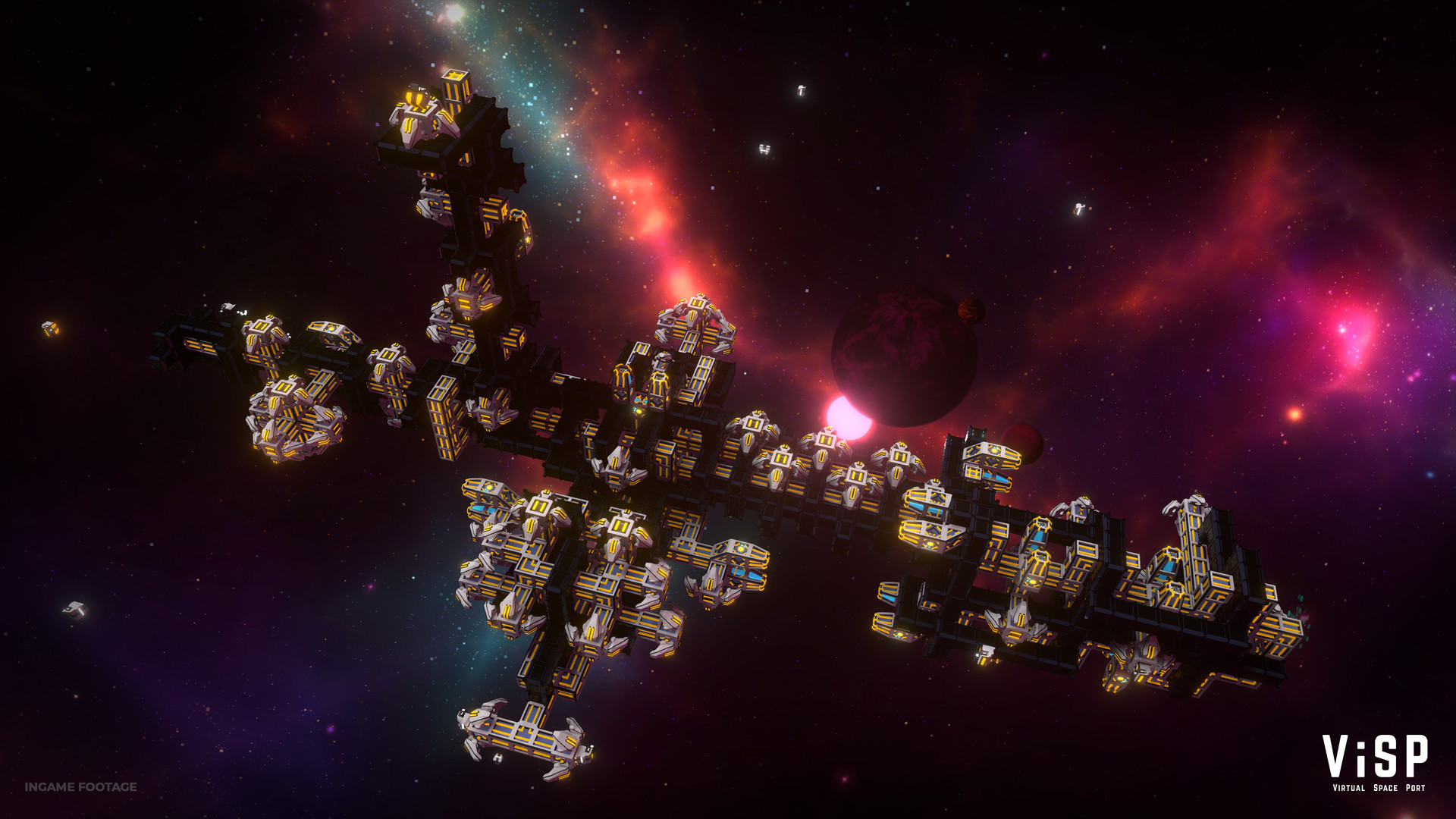
Farming and crafting
And quickly it happens. Enemy spaceships approach, want to play ship flipping games with you and suddenly extend their laser beam. If you notice this too late, entire hull sections threaten to break apart. Now you need to act quickly. You need building blocks, more building blocks. But you can only replenish them if transport ships floating around can spot one of your docking stations. You also have to "draw" these bases first by raising strategically suitable places on your ship by one "brick level" and attaching four directional bricks to the base.
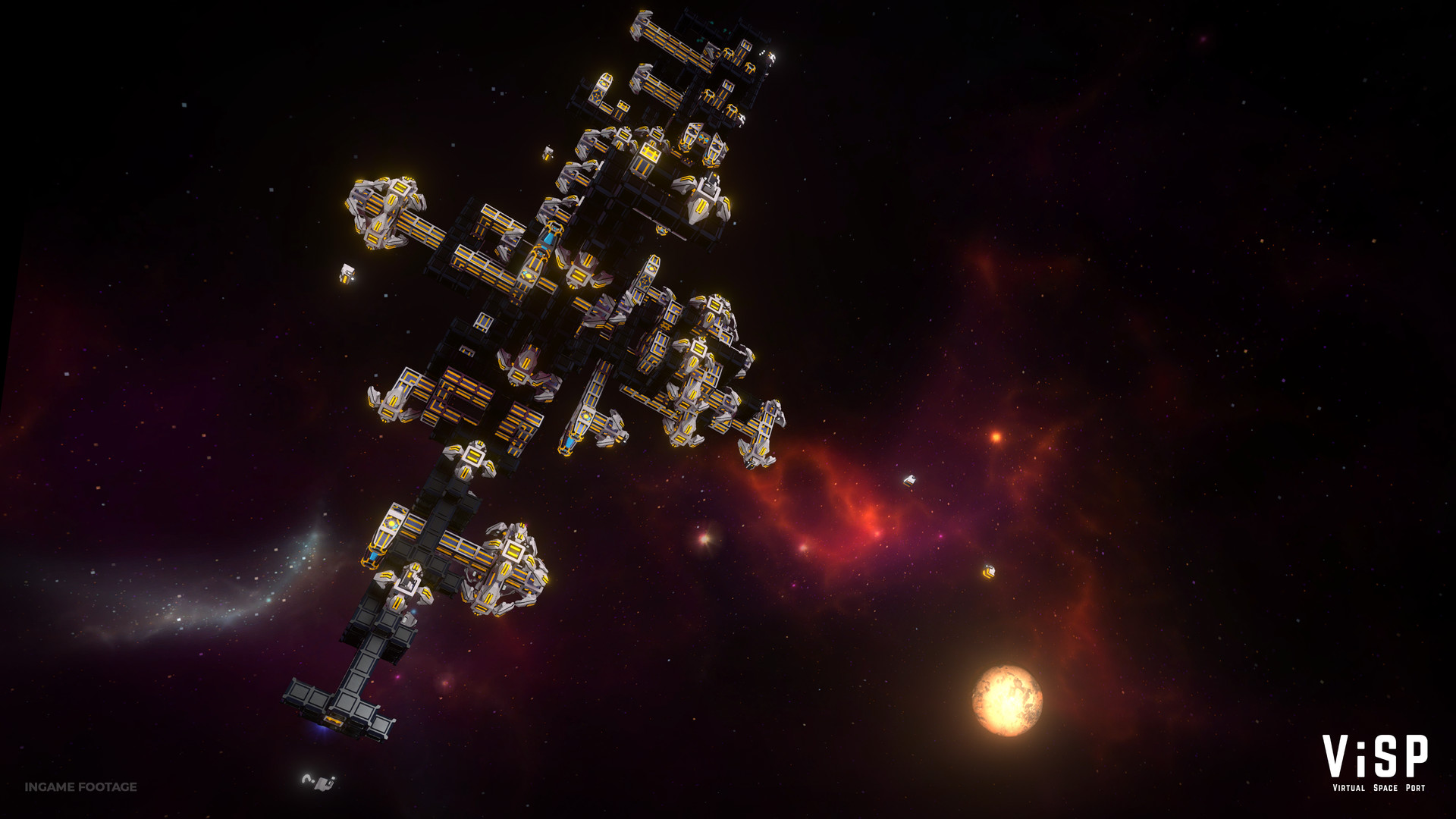
In the middle of the VR artwork
By the way, the remaining block display is shown virtually on the back of the controller at all times. And: If you press the triggers on both Vive or Oculus Touch controllers, you can rotate the entire spaceship structure in different directions. Also cool: Faulty constructions of the ship can be repaired virtually at any time by destroying them when you "grab" the misplaced blocks with both hands. Your adrenaline level can rise at any time. Namely, when enemy ships unexpectedly stalk you again from one side. To do this, you must keep an eye on everything around you and prick up your ears.
And this is where the virtual reality concept really works. You don't just stand - in the middle - of your rapidly rotating work of art and view it from all sides, but, as mentioned at the beginning, you have to keep building, erecting docking stations and setting up further protective zones. We also tested "ViSP" on the Oculus Rift with two camera sensors. There, too, the control works just as smoothly. The ultimate experience, however, is clearly with the HTC Vive, because you move around a lot. Of course, room scaling with the best possible tracking becomes the decisive fun factor.
Shortly before the end of each level, however, it's really all about the sausage - or rather about a final timer that appears during the construction phase of the last connecting columns to the main bases. If there is no more damage to the decisive last connecting pillars, you have won. This is quite fun, even though the difficulty level is not exactly easy and demands a lot of patience.
What I personally had a little trouble with at the beginning: I didn't understand for a long time how to build the docking zones, although it is visualised in the tutorial. Moreover, I only understood strategically after about the second level that you mostly have to then The best cards are to build as many protective walls as possible around the base structure at the beginning of a game level. The important docking points for supplies should also not be placed too late. Because: Building longer columns also means building longer protective walls. Later in the game you will encounter additional enemy formations.





